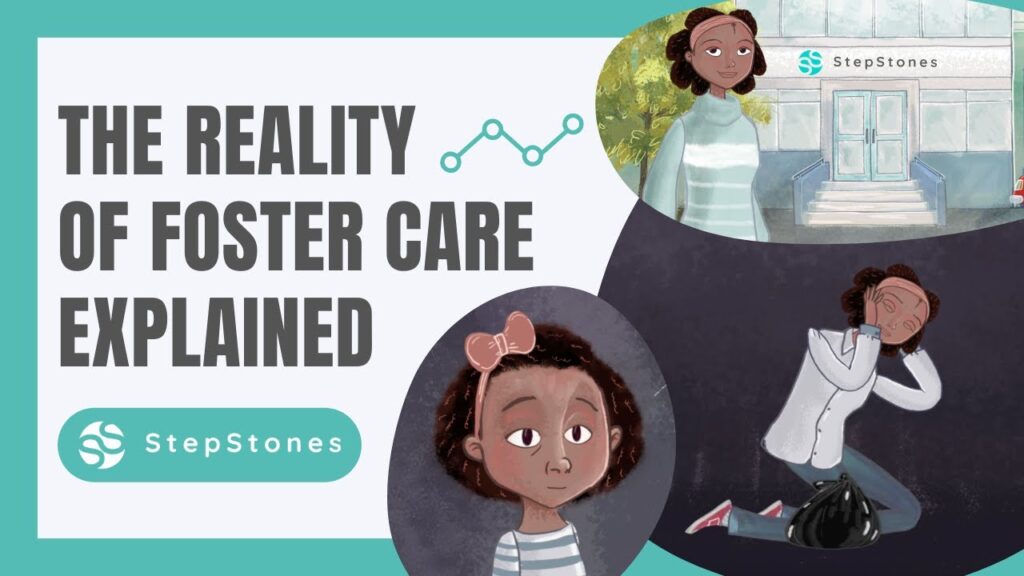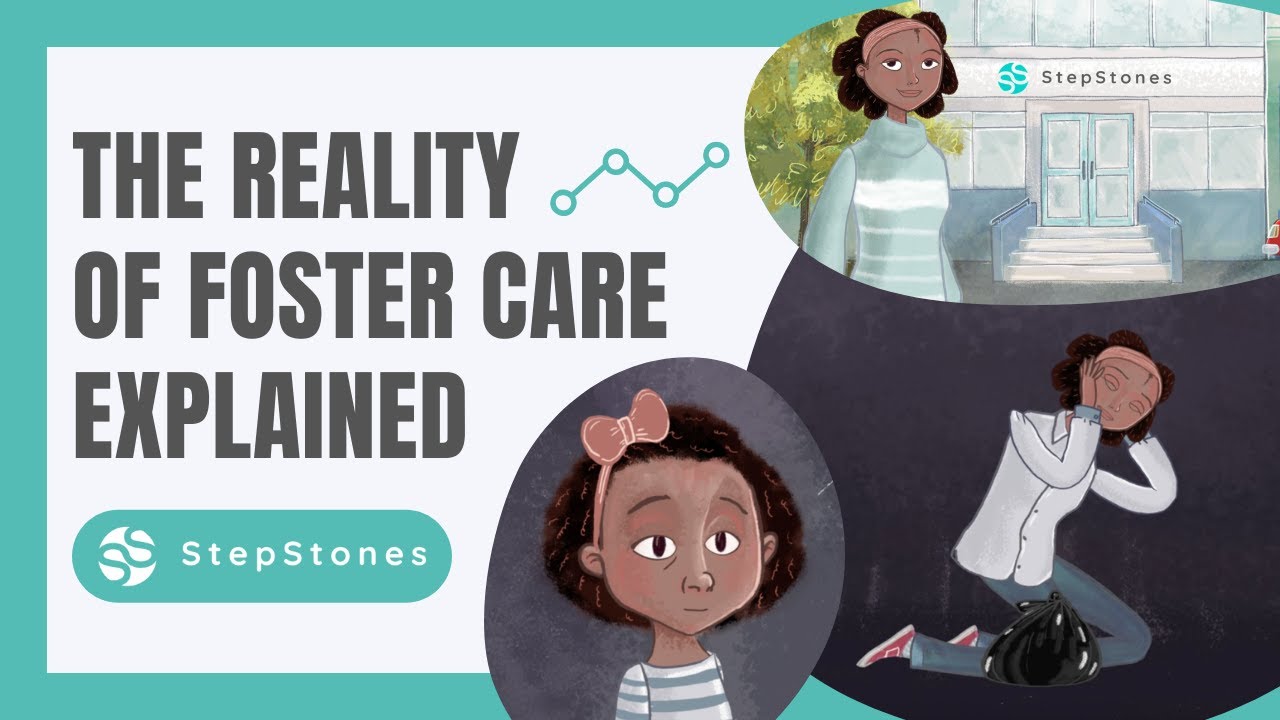
Why Is the Foster Care System Broken? Understanding the Challenges and Seeking Solutions
The foster care system, designed as a temporary haven for children unable to live safely with their biological families, faces significant challenges. When we ask, “Why is the foster care system broken?” we’re acknowledging a complex web of issues that impact vulnerable children and families. These issues range from systemic problems like insufficient funding and overburdened caseworkers to individual challenges such as trauma, mental health concerns, and a lack of stable placements. This article delves into the multifaceted reasons behind the perceived failures of the foster care system and explores potential avenues for reform.
Understanding the Core Issues
Several key factors contribute to the challenges within the foster care system. These issues are often interconnected and exacerbate one another, creating a cycle of instability and inadequate support for children and families involved.
Insufficient Funding and Resources
One of the most pervasive problems is the lack of adequate funding. Many states struggle to provide sufficient resources for foster care programs, leading to a shortage of foster homes, limited access to mental health services, and inadequate training for caseworkers. This scarcity of resources directly impacts the quality of care provided to children in foster care. When funding is cut, vital programs are often slashed first, including those offering preventative services that might keep families together in the first place. [See also: The Impact of Budget Cuts on Child Welfare]
Overburdened and Underpaid Caseworkers
Caseworkers are the backbone of the foster care system, responsible for managing cases, coordinating services, and ensuring the safety and well-being of children. However, they often face overwhelming caseloads, low salaries, and high levels of stress. This can lead to burnout, high turnover rates, and difficulty providing individualized attention to each child and family. The constant pressure and emotional toll can impact their ability to make sound decisions and effectively advocate for the children they serve. When caseworkers are stretched thin, the quality of oversight and support inevitably suffers, further contributing to the question of “Why is the foster care system broken?”
Lack of Stable Placements
Frequent moves between foster homes can be incredibly disruptive and traumatizing for children. Instability in placements can lead to behavioral problems, emotional distress, and difficulties forming attachments. The ideal scenario is a stable, loving foster home that can provide a sense of security and permanency. However, due to a shortage of suitable foster homes and challenges in matching children with appropriate placements, many children experience multiple moves throughout their time in foster care. This lack of stability hinders their development and can have long-lasting negative consequences. Finding suitable foster homes is difficult and contributes to “Why is the foster care system broken?”
Trauma and Mental Health Needs
Children enter foster care because they have experienced abuse, neglect, or other forms of trauma. These experiences can have profound effects on their mental and emotional health. Many children in foster care struggle with anxiety, depression, PTSD, and behavioral problems. However, access to mental health services is often limited, particularly in rural areas. Without adequate treatment, these children may struggle to heal from their trauma and develop healthy coping mechanisms. Addressing the mental health needs of children in foster care is crucial for their well-being and long-term success. The untreated trauma is part of “Why is the foster care system broken?”
Disparities in the System
Racial and ethnic disparities are prevalent in the foster care system. Children of color, particularly Black and Native American children, are overrepresented in foster care compared to their representation in the general population. This disparity may be attributed to systemic biases, poverty, and lack of access to resources in marginalized communities. Addressing these disparities requires culturally competent services, targeted prevention efforts, and a commitment to equity within the child welfare system. We need to understand “Why is the foster care system broken?” for all children, regardless of their background.
The Impact on Children and Families
The challenges within the foster care system have significant consequences for the children and families involved. These consequences can be far-reaching and impact their well-being, development, and future opportunities.
Educational Outcomes
Children in foster care often experience academic difficulties due to frequent school changes, emotional distress, and lack of support. They may fall behind their peers, struggle to concentrate in class, and have lower graduation rates. Providing educational stability and support is crucial for helping these children succeed academically. Tutoring programs, individualized education plans (IEPs), and dedicated educational advocates can make a significant difference in their educational outcomes. The impact on education is one reason “Why is the foster care system broken?”
Emotional and Behavioral Problems
As mentioned earlier, trauma and instability can lead to a range of emotional and behavioral problems in children in foster care. These problems may manifest as anxiety, depression, aggression, defiance, and difficulty forming relationships. Addressing these issues requires comprehensive mental health services, trauma-informed care, and supportive relationships with caregivers. Early intervention and ongoing support are essential for helping these children heal and develop healthy coping mechanisms. The behavioral issues are a symptom of “Why is the foster care system broken?”
Long-Term Outcomes
The long-term outcomes for children who have been in foster care can be bleak. They are at higher risk for homelessness, unemployment, substance abuse, and involvement in the criminal justice system. Providing support and resources to help them transition to adulthood is crucial for improving their chances of success. Independent living programs, vocational training, and mentorship opportunities can help them develop the skills and support networks they need to thrive. Understanding these long-term outcomes highlights “Why is the foster care system broken?”
Family Separation
The removal of children from their families is a traumatic experience for both the children and their parents. While foster care is intended to be a temporary solution, it can have long-lasting effects on family relationships. Supporting families in addressing the issues that led to the removal of their children is crucial for reunification. Providing access to substance abuse treatment, mental health services, and parenting classes can help parents create a safe and stable home environment for their children. Reunification should always be the primary goal, when safe and appropriate. The trauma of family separation contributes to “Why is the foster care system broken?”
Potential Solutions and Reforms
Addressing the challenges within the foster care system requires a multifaceted approach that involves systemic reforms, increased funding, and a commitment to providing individualized support to children and families. There are several potential solutions and reforms that can help improve the system and ensure that children in foster care receive the care and support they need.
Increased Funding and Resources
Investing in foster care programs is essential for improving the quality of care provided to children. Increased funding can be used to recruit and train more foster parents, provide better mental health services, and reduce caseworker caseloads. It can also be used to support preventative services that help families stay together and prevent the need for foster care in the first place. Prioritizing funding for child welfare is a critical step in addressing “Why is the foster care system broken?”
Recruiting and Retaining Foster Parents
A shortage of foster homes is a major challenge in many states. Recruiting and retaining foster parents requires outreach efforts, financial incentives, and ongoing support. Foster parents need access to training, respite care, and support groups to help them cope with the challenges of caring for children who have experienced trauma. Making fostering more accessible and supportive can help increase the number of available foster homes and improve the stability of placements for children. We need more foster families to address “Why is the foster care system broken?”
Improving Caseworker Support
Reducing caseworker caseloads, increasing salaries, and providing better training and support can help reduce burnout and improve the quality of services they provide. Caseworkers need access to supervision, mentorship, and professional development opportunities to help them manage the demands of their jobs. Investing in caseworker support is an investment in the well-being of children in foster care. Supporting caseworkers helps alleviate the symptoms of “Why is the foster care system broken?”
Focusing on Prevention
Preventing the need for foster care in the first place is crucial for reducing the strain on the system and improving outcomes for children and families. Investing in programs that support families at risk of separation, such as home visiting programs, parenting classes, and substance abuse treatment, can help prevent abuse and neglect and keep families together. Prevention efforts are a cost-effective way to improve child welfare and reduce the number of children entering foster care. Prevention is key to addressing “Why is the foster care system broken?”
Promoting Kinship Care
Kinship care, which involves placing children with relatives or close family friends, can provide a more stable and familiar environment for children in foster care. Kinship caregivers are often more likely to maintain connections with the child’s family and community, which can help preserve their sense of identity and belonging. Supporting kinship caregivers with financial assistance, training, and support services can help them provide a safe and nurturing home for children. Kinship care addresses “Why is the foster care system broken?” by prioritizing family connections.
Enhancing Mental Health Services
Providing access to comprehensive mental health services for children in foster care is essential for addressing their trauma and promoting their emotional well-being. This includes therapy, counseling, and psychiatric care. Mental health services should be trauma-informed and culturally competent, and they should be accessible to children in all settings, including foster homes, schools, and residential treatment facilities. Improving mental health services is vital to fixing “Why is the foster care system broken?”
Conclusion
The question of “Why is the foster care system broken?” doesn’t have a simple answer. It’s a complex issue rooted in systemic failures, inadequate resources, and the profound impact of trauma on vulnerable children and families. Addressing these challenges requires a comprehensive approach that includes increased funding, improved caseworker support, a focus on prevention, and a commitment to providing individualized care and support. By working together, we can create a foster care system that truly serves the best interests of children and families and provides them with the opportunities they need to thrive. Ultimately, the goal is to ensure that every child has a safe, stable, and loving home where they can reach their full potential. Understanding and addressing “why is the foster care system broken” is crucial for building a better future for these children.

